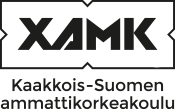Digital electronics (5 cr)
Code: IT00CO80-3003
General information
Enrollment
15.08.2020 - 04.09.2020
Timing
31.08.2020 - 18.12.2020
Number of ECTS credits allocated
5 op
Mode of delivery
Contact teaching
Campus
Mikkeli Campus
Teaching languages
- English
Degree programmes
- Degree Programme in Information Technology
Teachers
- Reijo Vuohelainen
Teacher in charge
Reijo Vuohelainen
Groups
-
ITMI19SPInformation technology, full-time studies
Objective
You can use correctly the terms of digital electronics and microprocessors. You can solve simple combinational design tasks by turning the design requirements into a truth table and Boolean equation, by simplifying the equation, and finally design the logic circuit using logic gates. You can design a simple counter or other sequential circuit by using flip-flops. You are able to read technical documentation and build or simulate circuits for IoT purposes.
Content
What are combinational functions and how can they can be impletented?
How are the functions implemented by using programmable logic, PLD?
How are Boolean functions simplified?
What are sequential circuits? How can they be built using flip-flops?
How do simple processors work?
How to build circuits with Arduino?
Teaching methods
Scheduled track:
You will attend teaching and guidance sessions as specified in the weekly schedule.
Your study routine is determined by the scheduled group sessions and by the self-study assignments. You will do the labs in small groups of three students.
Exam schedules
Check Calendar on Learn. Two resit exams can be taken if course is failed.
Student workload
135 h, of which 60 hours are worked in a classroom and labs. Homeworks, exam preparations and report writing takes the rest of the time.
Evaluation scale
1-5
Assessment methods and criteria
Lectures and laboratory excercises are collected to a lab report. Two mid term exams.
To be settled at the course kick off.
Assessment criteria, good (3-4)
Students can
a. use professional vocabulary systematically.
e. use the key models, methods, software and techniques of the professional field.
f. work as team members in a goal-oriented way.
Qualifications
Discrete mathematics, Computer hardware, Electronics and measurements or equivalent knowledge
